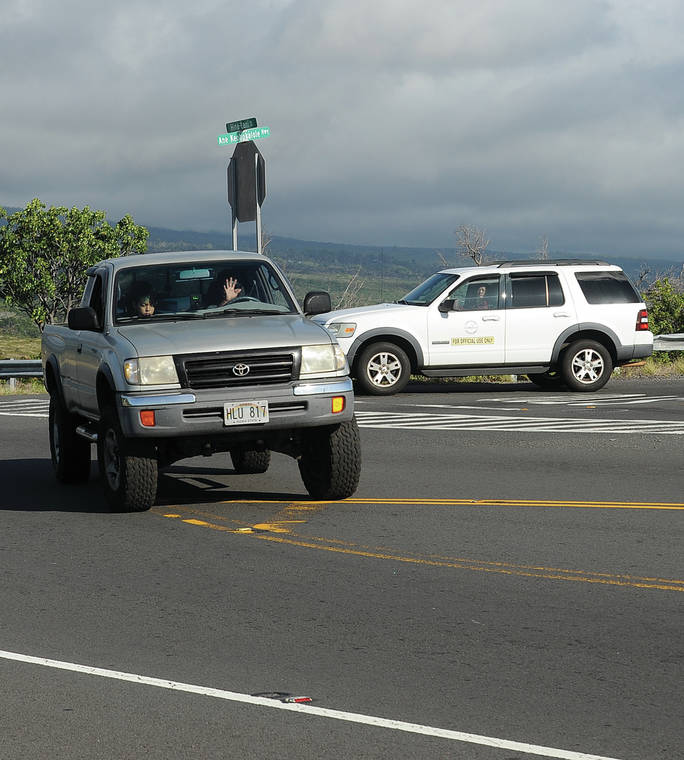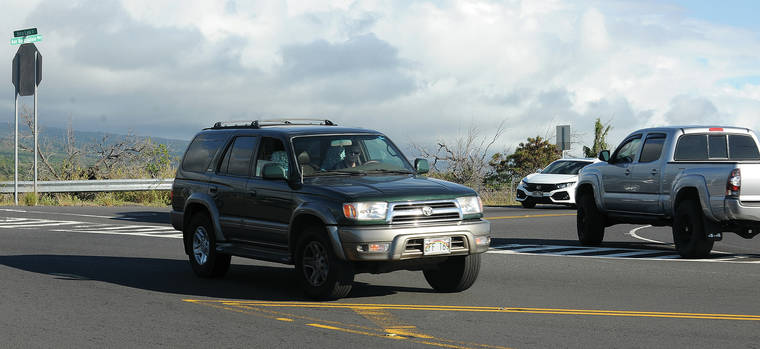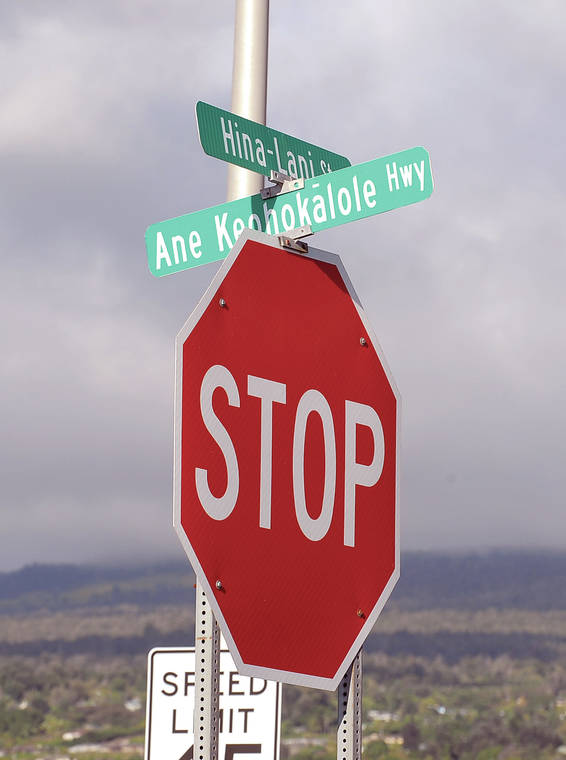$103M bond issue would build roads

The intersection of Ane Keohokalole Highway and Hina Lani St is seen on Wednesday. (Laura Ruminski/West Hawaii Today)

The intersection of Waikoloa Rd. and Paniolo Ave. will be getting a $5.5 million upgrade, thanks to action taken by the County Council in January. It’s one of the projects on a bond list to be considered by the council Finance Committee Tuesday. (Laura Ruminski/West Hawaii Today)

The intersection of Ane Keohokalole Highway and Hina Lani Street is seen on Wednesday.

The intersection of Ane Keohokalole Highway and Hina Lani Street is seen on Wednesday. (Laura Ruminski/West Hawaii Today)

The intersection of Ane Keohokalole Highway and Hina Lani St is seen on Wednesday. (Laura Ruminski/West Hawaii Today)

The intersection of Ane Keohokalole Highway and Hina Lani Street is seen on Wednesday. (Photos by Laura Ruminski/West Hawaii Today)
A move to leverage the county general excise tax by floating bonds to expedite road projects could mean the payments stretch out past the 2030 expiration of the GET.
A move to leverage the county general excise tax by floating bonds to expedite road projects could mean the payments stretch out past the 2030 expiration of the GET.
But County Council Chairman Aaron Chung, who’s sponsoring a bill authorizing the issuance of $103 million in bonds, says he stills believes the debt can be sustainable in the budget in the interim. It’s also possible the state Legislature could extend the county one-half cent surcharge beyond the Dec. 31, 2030, sunset date, he said.
“We have an infusion of money coming in that we don’t normally have because we upped the GET. Even if there’s a sunset of 2030, I think it would still be wise to use that money now,” Chung said Wednesday. “I do know the next 10 years, we will have an infusion of money and we should make use of that money to at least get the best bang for our buck.”
Besides, Chung said, the council promised the public it would see transportation improvements once the GET was passed.
Transportation priorities specified in the bill are: Ane Keohokalole Highway Phase III-Hina Lani Street to Kaiminani Drive, Puna Connectivity and Emergency Access Routes, Paniolo Avenue Rehabilitation/ Waikoloa Intersection Construction, Kawili Street Shoulder Improvements, Mamalahoa Highway Resurfacing-Hohola Drive to Kekehau Street, Plumeria Street Rehabilitation and Waianuenue Avenue.
Bonds are generally issued for 20 years, said county Finance Director Deanna Sako. She said there are options to make the bonds workable, such as issuing 10-year bonds, or using other funding sources if the GET surcharge is eliminated.
“The bonds will be general obligation bonds like the ones we issue now, so we can use any source of revenue we have,” Sako said.
The council Finance Committee is scheduled to consider Chung’s Bill 145 at 9 a.m. Tuesday in Hilo council chambers. The public can also testify at the West Hawaii Civic Center, the Waimea and Pahoa council offices, the Old Kohala courthouse and the Naalehu state office building.
Even without the addition of bonds contemplated in Bill 145, the county anticipates its debt service — the principal and interest payments on loans — to increase 12.2% for the fiscal year that starts July 1. That brings debt service to $59.5 million out of a $625.9 million budget. Most of the increase is attributed to upcoming sewer and solid waste projects.
The county is on sound financial footing, however, the administration says.
The county’s bond debt ratio, based on all debt approved by the County Council, is at 12.9% of general expenditures, nearing the 15% ceiling recommended by the Government Finance Officers Association. But the county has so far borrowed about 9.6%.
Few council members have historically balked at the borrowing, reasoning that a growing population needs facilities. The capital improvement budget proposed this year by Mayor Harry Kim — basically a “wish list” of projects that may not all get built right away — includes 37 projects requiring a total appropriation of $175.7 million over the next five years.


